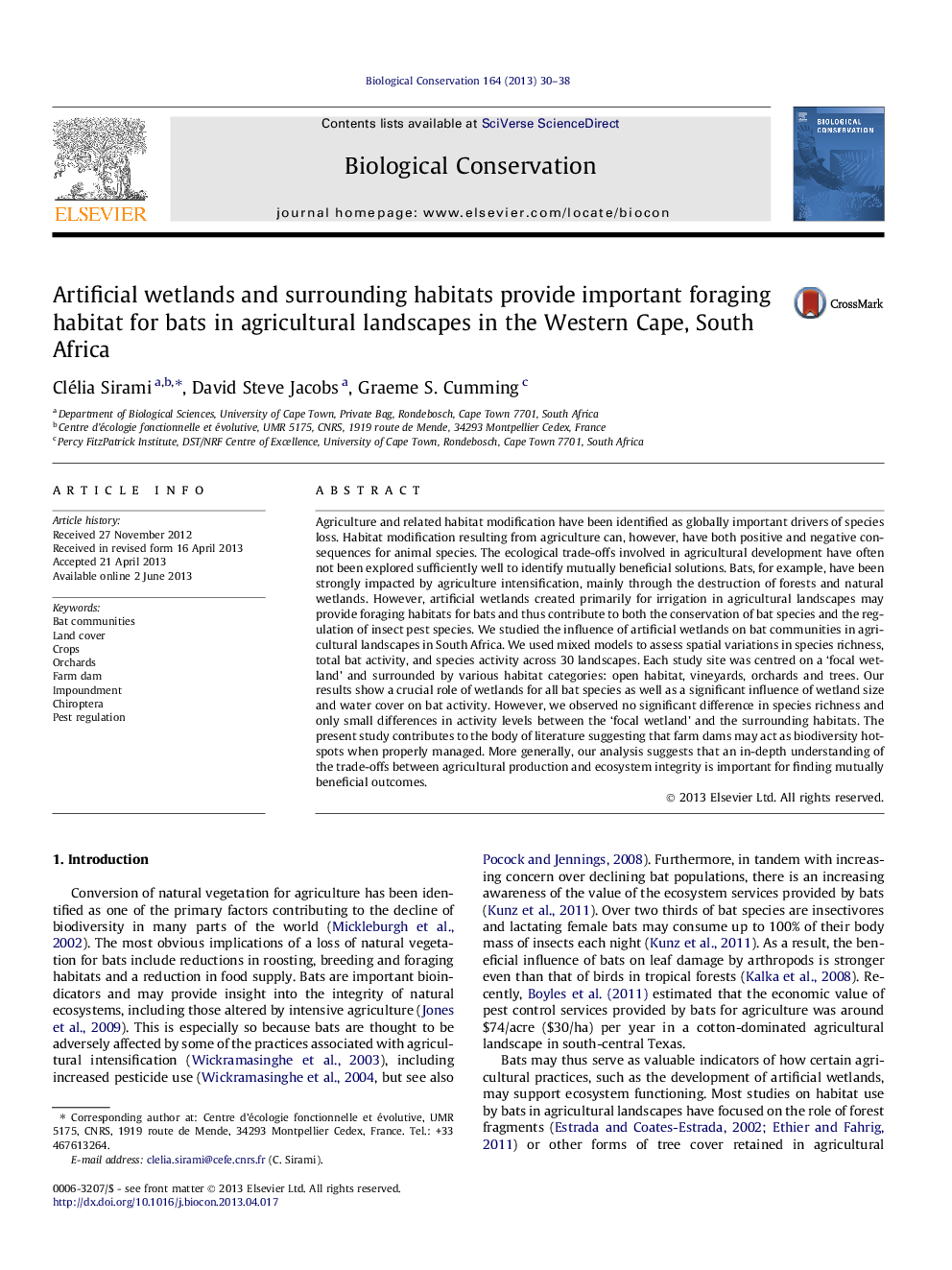| کد مقاله | کد نشریه | سال انتشار | مقاله انگلیسی | نسخه تمام متن |
|---|---|---|---|---|
| 6300538 | 1617937 | 2013 | 9 صفحه PDF | دانلود رایگان |
- Artificial wetlands provided high quality habitat for all bat species.
- Bats species richness and activity levels remained high in agricultural habitats surrounding farm dams.
- Grassland and crops were the most suitable habitats after wetlands, especially for molossid bats.
- Bat species richness and activity levels were similar in our study landscapes and in protected areas.
- Artificial wetlands can improve bat conservation and biological pest control.
Agriculture and related habitat modification have been identified as globally important drivers of species loss. Habitat modification resulting from agriculture can, however, have both positive and negative consequences for animal species. The ecological trade-offs involved in agricultural development have often not been explored sufficiently well to identify mutually beneficial solutions. Bats, for example, have been strongly impacted by agriculture intensification, mainly through the destruction of forests and natural wetlands. However, artificial wetlands created primarily for irrigation in agricultural landscapes may provide foraging habitats for bats and thus contribute to both the conservation of bat species and the regulation of insect pest species. We studied the influence of artificial wetlands on bat communities in agricultural landscapes in South Africa. We used mixed models to assess spatial variations in species richness, total bat activity, and species activity across 30 landscapes. Each study site was centred on a 'focal wetland' and surrounded by various habitat categories: open habitat, vineyards, orchards and trees. Our results show a crucial role of wetlands for all bat species as well as a significant influence of wetland size and water cover on bat activity. However, we observed no significant difference in species richness and only small differences in activity levels between the 'focal wetland' and the surrounding habitats. The present study contributes to the body of literature suggesting that farm dams may act as biodiversity hotspots when properly managed. More generally, our analysis suggests that an in-depth understanding of the trade-offs between agricultural production and ecosystem integrity is important for finding mutually beneficial outcomes.
Journal: Biological Conservation - Volume 164, August 2013, Pages 30-38
